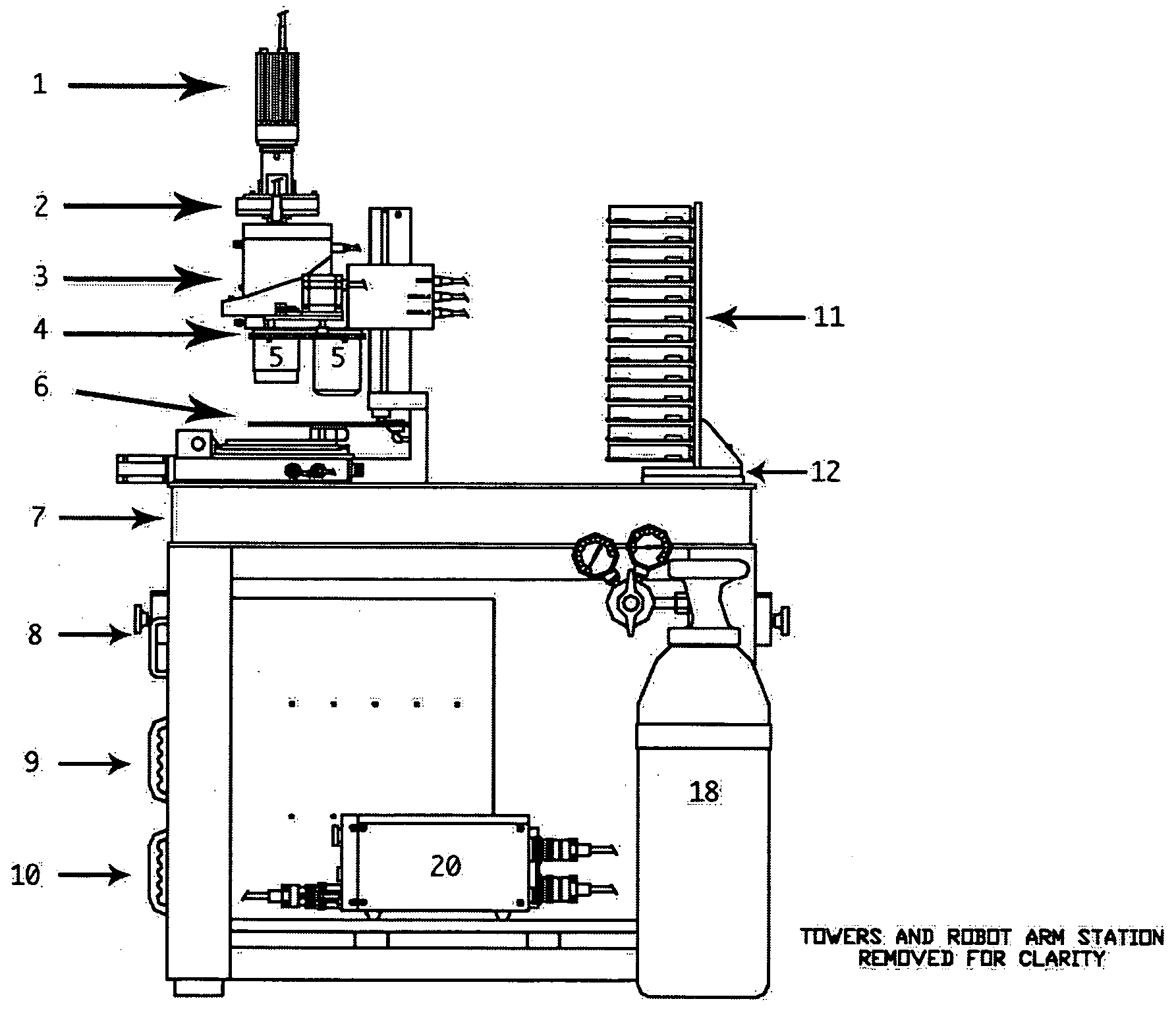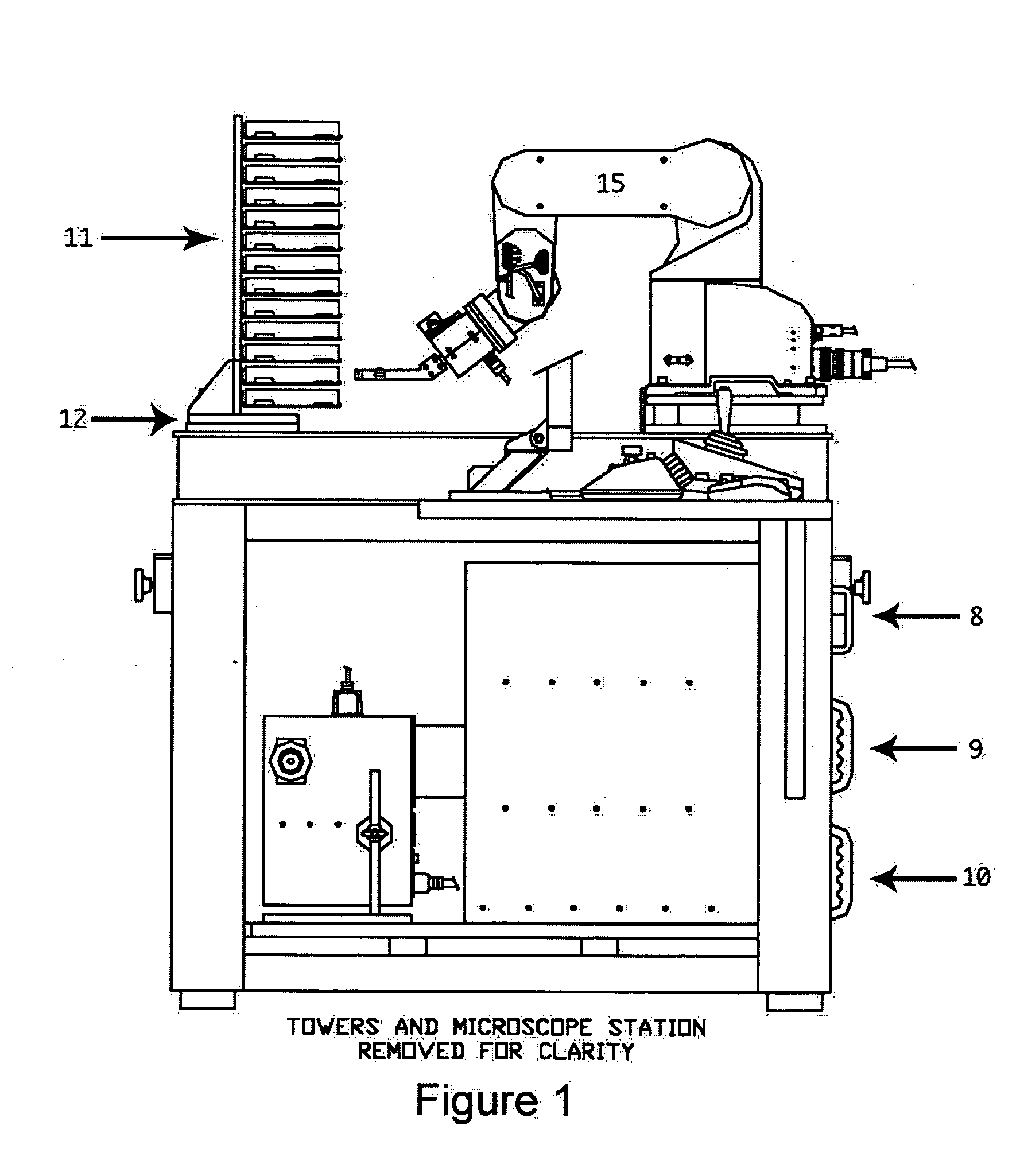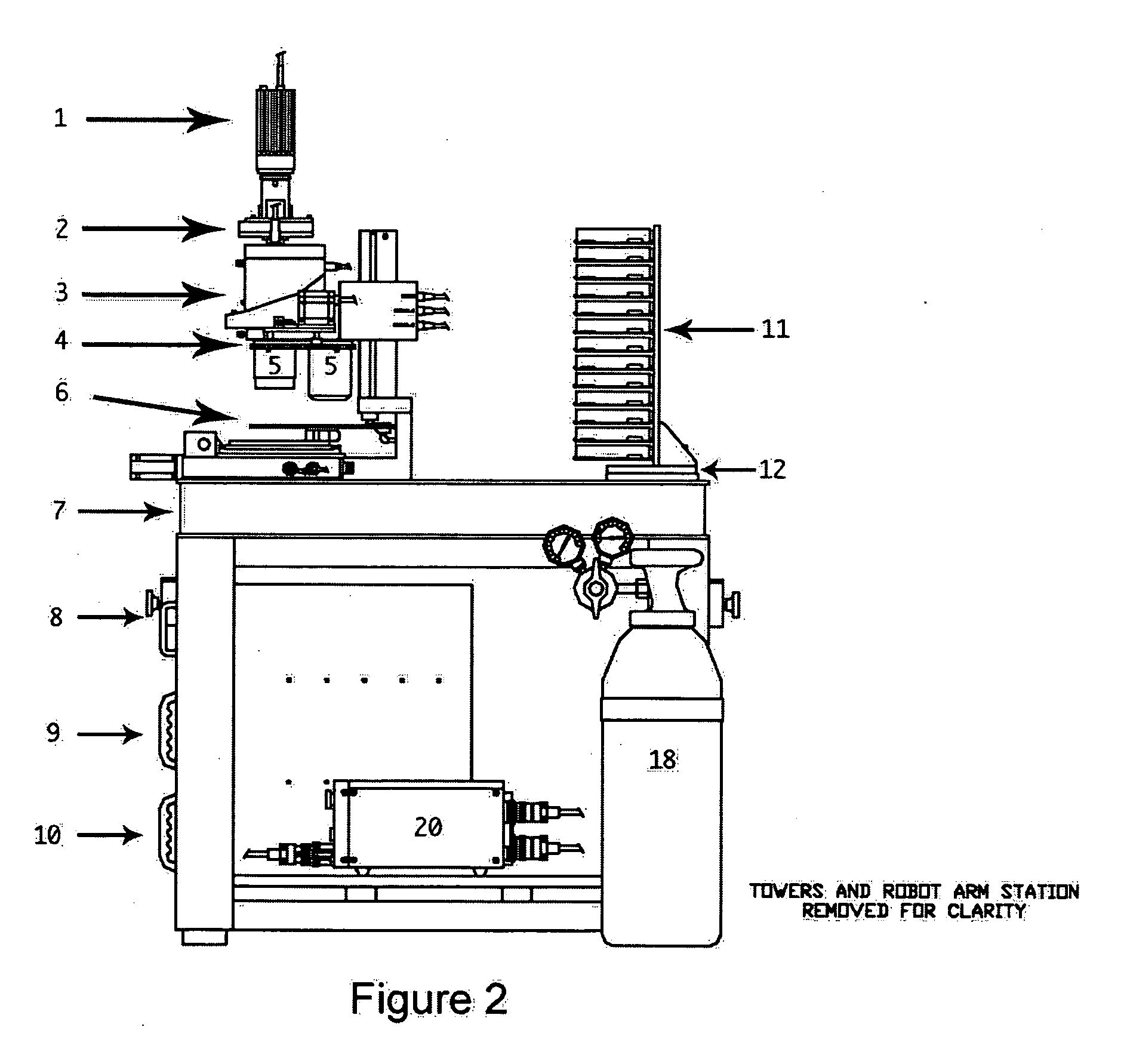Robotic microscopy apparatus for high throughput observation of multicellular organisms
a multicellular organism and robotic technology, applied in the field of robotic microscopy apparatus for high throughput observation of multicellular organisms, can solve the problems of limiting the throughput of any screening method used with any model organism, affecting the economic or workforce level of high-throughput analyses with model organisms, and affecting the economic and workforce level. , to achieve the effect of reducing costs
- Summary
- Abstract
- Description
- Claims
- Application Information
AI Technical Summary
Benefits of technology
Problems solved by technology
Method used
Image
Examples
example 1
[0181] Acquire brighffield and fluorescent images of individual objects within a well of multiwell plate. Each well of a 12-well plate is processed with the following steps:
[0182] 1. In order to arrest nematode locomotion, the HIDI control system applies carbon dioxide gas to the well under operation using a proprietary gas applicator
[0183] 2. A brightfield full well image of a well is acquired using a software based auto-focus algorithm
[0184] 3. The full well image is analyzed to identify individual nematodes.
[0185] 4. Five centrally located full sized worms are chosen for observation
[0186] 5. The system magnification is increased so that an acquired image fits one full sized nematode
[0187] 6. The XY imaging stage is moved until the 1st of the five chosen nematodes is centered in the field of view
[0188] 7. A sequence of images are acquired using brightfield, YFP and RFP filter sets
[0189] 8. The XY imaging stage is moved to center the 2nd of the five chosen nematodes in the ...
example 2
[0195] Imaging a full well, and counting and analyzing objects in the well. Each well of a 12-well plate is processed with the following protocol:
[0196] 1. A brightfield full well image of a well is acquired using a software based auto-focus algorithm
[0197] 2. The full well image is processed within a user definable area of interest
[0198] 3. The area of interest is analyzed to identify individual nematodes.
[0199] 4. The identified nematodes are measured in size and counted.
[0200] 5. Counts are parsed into user configurable bins according to nematode size.
[0201] 6. The full well image is stored on disk.
[0202] 7. A count results file is generated containing a table of all well counts for the experiment run.
PUM
 Login to View More
Login to View More Abstract
Description
Claims
Application Information
 Login to View More
Login to View More - R&D
- Intellectual Property
- Life Sciences
- Materials
- Tech Scout
- Unparalleled Data Quality
- Higher Quality Content
- 60% Fewer Hallucinations
Browse by: Latest US Patents, China's latest patents, Technical Efficacy Thesaurus, Application Domain, Technology Topic, Popular Technical Reports.
© 2025 PatSnap. All rights reserved.Legal|Privacy policy|Modern Slavery Act Transparency Statement|Sitemap|About US| Contact US: help@patsnap.com



